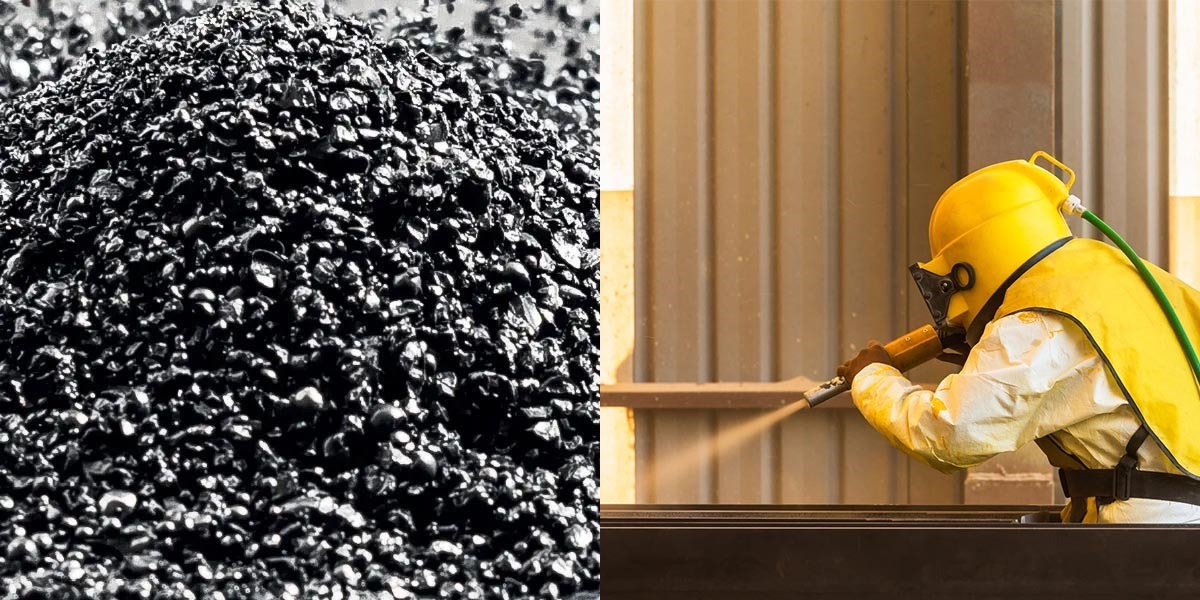Sep 25 (News On Japan) - Copper slag is widely used in multiple types of applications, as professional blasting material, additive for different types of composite cements, roofing, concrete and mortar, additive in paving tiles industry, granular replacement for different mixtures of hot asphalt, material used for granular roof tiles production and granular base for different mixtures.

Copper slag is one of the most appreciated blasting materials in Europe. It is an ecological and non-toxic product (free silica content <0,1%). It was first introduced in 1960, and since then it was widely used to remove rust, old coatings of paint and contaminated layers on metallic surfaces, stone, concrete, brick, mainly in metal, automotive, shipbuilding and petrochemical industries.
So far, many studies have been conducted to determine the properties of copper slag in blasting operations. To determine the efficiency of copper slag as blasting agent, meaning (1) area cleaned per hour, and (2) abrasive consumption for cleaning the reference surface, Kambham et al. lead a study in 2005, at the New Orleans University, Department of Civil and Environmental Engineering. It is considered that, the quality of the blasting agent is an important factor in blasting efficiency, among other factors, like (1) blasting pressure - considered at 80, 100 and 120 PSI, and (2) feed rate - 3, 4 and 5 turns of opening of a reference Fina II valve. This study lead to the following conclusions:
- Copper slag is a highly efficient blasting material, with excellent properties of cleaning and blasting multiple types of surfaces. Being an ecological product, it can be successfully used in open space blasting, with minimum impact on the environment. The possibility of reusing material allows material savings in case of indoor blasting.
- Area cleaned is wider at 3 and 4 turns of opening (for a Fina II reference valve). At 5 turns of opening, the productivity decreases due to the turbulent flow of the material (the particles leaving the nozzle interact with the rebounding particles from the base surface, therefore the particles are breaking down leading to increases in the consumption).
- Abrasive consumption is optimum at 100 or 120 PSI blasting pressure when cleaning old coatings of paint, without registering significance variations in case of rusted surfaces. At 80 PSI blasting pressure, the abrasive consumption is higher when removing old paint coatings, due to the lower velocity effect (abrasive particles travel at a low speed to the base surface).
- The blasting pressure should be kept constant to prevent consumption increasing in case of low blasting pressures, and, on the other hand, to prevent particles' break at high blasting pressures.
Copper slag is also used for the production of composite cements as replacement for raw materials used in clinker production. Due to the high Fe content, copper slag acts as ferrous adjuvant in the clinker production, while its low melting point could reduce the calcination temperature for cement clinker. At international level, the clinker factor is about 75% in the industry, the remaining 25% being supplemented by copper slag and other materials, providing outstanding strength and durability properties to the composite cements. Concrete and mortar produced by replacing parts of river sand with copper slag are more resistant in time, have a low permeability and a low water absorption.
GritSablare is a national leader in providing complete solutions for blasting surfaces, offering a wide range of professional blasting materials. The company provides large stocks of blasting materials, stored in optimal conditions, multiple grain sizes per material, and fast delivery, both at national and international level.















